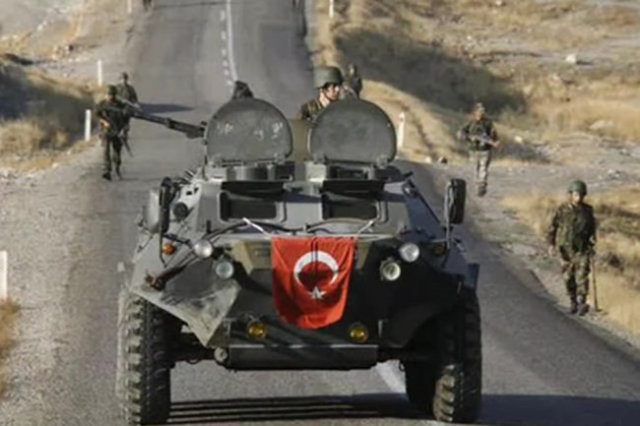Russian BTR-80 are traditionally popular in the armed forces of almost three dozen countries. For example, in the early 90s, armored personnel carriers were purchased by the Turkish gendarmerie. In total, more than two hundred and thirty units were delivered.
According to some reports, this technique was used during the peacekeeping mission in Bosnia, as well as in operations against Kurdish formations.
Despite the long service life, they are not going to remove this equipment from service yet.
Moreover, it was reported that Turkey has established the production of spare parts for it. In addition, an upgraded model armed with a 120-mm mortar produced under a French license was demonstrated.
It is also known that together with Romania they created the RN-94 armored personnel carrier, which was a triaxial floating model with a 240-horsepower power plant located in the middle part of the hull, which looked like an "eighty". The maximum speed on the highway during its tests reached 110 km/h. The power reserve was 600 km .
There were two armored doors in the stern for landing and disembarkation of troops from eight servicemen, another hatch was cut in the starboard side.
At first, the usual 14.5-mm and 7.62-mm machine guns in the turret were used as weapons. Then we decided to try out options with a 40-mm Mk19 automatic grenade launcher and a 25-mm rapid-firing cannon.
It was planned to organize mass production of these armored personnel carriers, but for various reasons these plans could not be implemented.
When the North Koreans turned the BTR-80 into 6×6, I was not surprised ,the Romanian RN-94 had already been there. pic.twitter.com/zqqLngjc43
— Caesar (@Ninja998998) July 4, 2019
Turkish Army BTR-80, possibly photographed with SFOR in Bosnia. Turkey is one of the least known operators of Russian BTRs, also having operated former GDR BTR-60s transferred after the reunification of Germany. pic.twitter.com/tR4m652T5L
— David.Det (@DavidDetten) December 9, 2021
Alexey Brusilov

